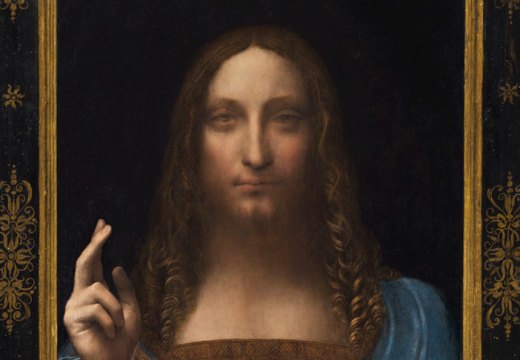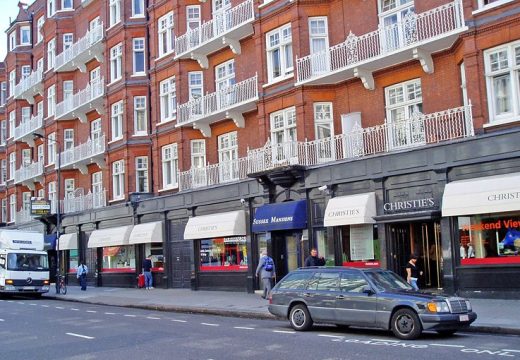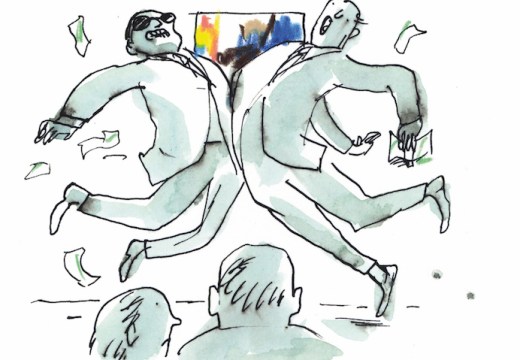The modern art market was born, it has often been said, at 9.30pm on 15 October 1958. That night Sotheby’s staged the sale of Impressionist paintings that had belonged to the late Jakob Goldschmidt; it was masterminded by Peter Wilson, the newly appointed chairman. The sale, which made a record £781,000, presented many novel features: it was held in the evening and in black tie, movie stars occupied the front row, television cameras were present and – most startling of all – there were only seven items for sale. Coming at a time when auctions were trade affairs and still had the appearance of the old curiosity shop, this auction was the first ‘event’ sale of the modern era. Everybody realised that a great change had taken place; Wilson had seen the future and grasped the importance of public relations. The sale established London as the centre of the world art market and Sotheby’s as an international auction house.
The task of persuading Americans to sell French paintings in London (where there was no indigenous market for them) was enabled by technology, particularly the aeroplane and the telephone, and assisted by language. But it was Wilson who saw the opportunity. It is often forgotten that before the Goldschmidt sale, the international art market was controlled by major art dealers, who kept offices in Paris, New York and London. In the 1950s neither Sotheby’s nor Christie’s had expanded beyond London. But Christie’s still retained the loyalty of great aristocratic Old Master collections in Britain, so Sotheby’s had to look abroad. This suited Wilson well: he was a good linguist and for his second home chose a location near Antibes in the south of France. He pinned the growth of Sotheby’s on the custom of the great American and Continental collectors of works of art, particularly Impressionism. Wilson hired scholars to write the sales catalogues and filled the firm with bright young stars straight out of school – including, most famously, Bruce Chatwin.
Sotheby’s Maestro: Peter Wilson and the Post-War Art World, which contains 54 memoirs by collectors, dealers and former colleagues of Wilson, is the fullest account of his life and achievements to date. The editors have done a comprehensive job rounding up contributors from around the globe. What was he like? Tall, elegant, slightly cherubic, PCW – as he was always known – was a bit of an enigma. Exquisitely mannered and amusing to be with, Wilson was inspiring and charismatic, but also dictatorial. He was an impulsive risk-taker who combined a dignified exterior with a mischievous streak. This last he inherited from his rakish father, the Yorkshire baronet Sir Matthew ‘Scatters’ Wilson. Peter was an atypical Etonian, who had no time for the tribal activities of the English upper class (he belonged to no clubs). After Oxford – where he did not shine – he joined Sotheby’s and remained there all his life, except for a brief wartime spell in postal intelligence (which gave rise to all sorts of false conjectures). His personal passion was for sculpture. Anthony Hobson, the formidable head of the book department, once told me that Wilson had a most sensitive eye as a young man and would gaze for hours at works of art, but at some point became consumed by the market.
Working at Sotheby’s under Wilson could be exhilarating. He would suddenly appear in the department and invite you with 10 minutes’ notice (and experience in the firm) to come with him to see a major client’s collection in Monte Carlo or wherever. By the same token he was secretive, very private, and ruthless if you crossed him. He would do anything to win a sale, although his usual strategy was, as it were, ‘to row towards his object with muffled oars’. With his laconic manner, Wilson was the most accomplished auctioneer of his day (perhaps sharing that pedestal with Patrick Lindsay at Christie’s). He worked from a poky office next to the saleroom, preferring to be close to the action.
Sotheby’s became an international success story in the 1960s, acquiring the venerable New York auction house Parke-Bernet in 1964. Wilson seemed unstoppable, opening offices in all the major European capitals and, notably, a saleroom in Monte Carlo in 1975. But he is remembered above all for the great sales he staged, among them the Mentmore sale in 1977 and the Von Hirsch sale the following year. Along the way he picked up a controversial reputation both inside and outside the firm, making some questionable decisions: the Sotheby’s branded cigarette, and the firm’s overly close association with the British Rail Pension Fund. Most damaging of all was his personal involvement with the Roman silver hoard known as the Sevso Treasure, which revealed an amoral side to his character.
I was probably the last person to be hired by Wilson when I joined the firm in 1979. Sotheby’s still held ambitions of world domination, with that ‘go anywhere, sell everything for everybody’ spirit which it would soon have to relinquish. I felt PCW’s capricious charm: the fun, and the sense of a man at the top of his game, serenely gliding from one triumph to another. But all was not well. The company had little financial discipline, and Wilson was a sick man. He retired the following year to Antibes but tried to maintain control through his successor, David Westmorland, who had to put up with Lear-like rages. PCW died in 1984 and since that time there have been at least four attempts to write his life (including one by me), all of which foundered on the lack of written evidence: there was barely a scrap of paper in the Sotheby’s files. He left no tracks except in the long memories of his old colleagues, and so this affectionate group of portraits is as close as we can ever now get to the man. And it does provide a full portrait from about 1950, although the earlier story is probably unrecoverable. The impression one gains is of fantastic ambition, vigour and fun.
Sotheby’s Maestro: Peter Wilson and the Post-War Art World by Katherine MacLean and Philip Hook (eds.) is published by Sotheby’s.
James Stourton was Chairman of Sotheby’s UK until 2012.
From the May 2018 issue of Apollo. Preview and subscribe here.
Unlimited access from just $16 every 3 months
Subscribe to get unlimited and exclusive access to the top art stories, interviews and exhibition reviews.














![Masterpiece [Re]discovery 2022. Photo: Ben Fisher Photography, courtesy of Masterpiece London](http://www.apollo-magazine.com/wp-content/uploads/2022/07/MPL2022_4263.jpg)
Has the Fitzwilliam lost the hang of things?